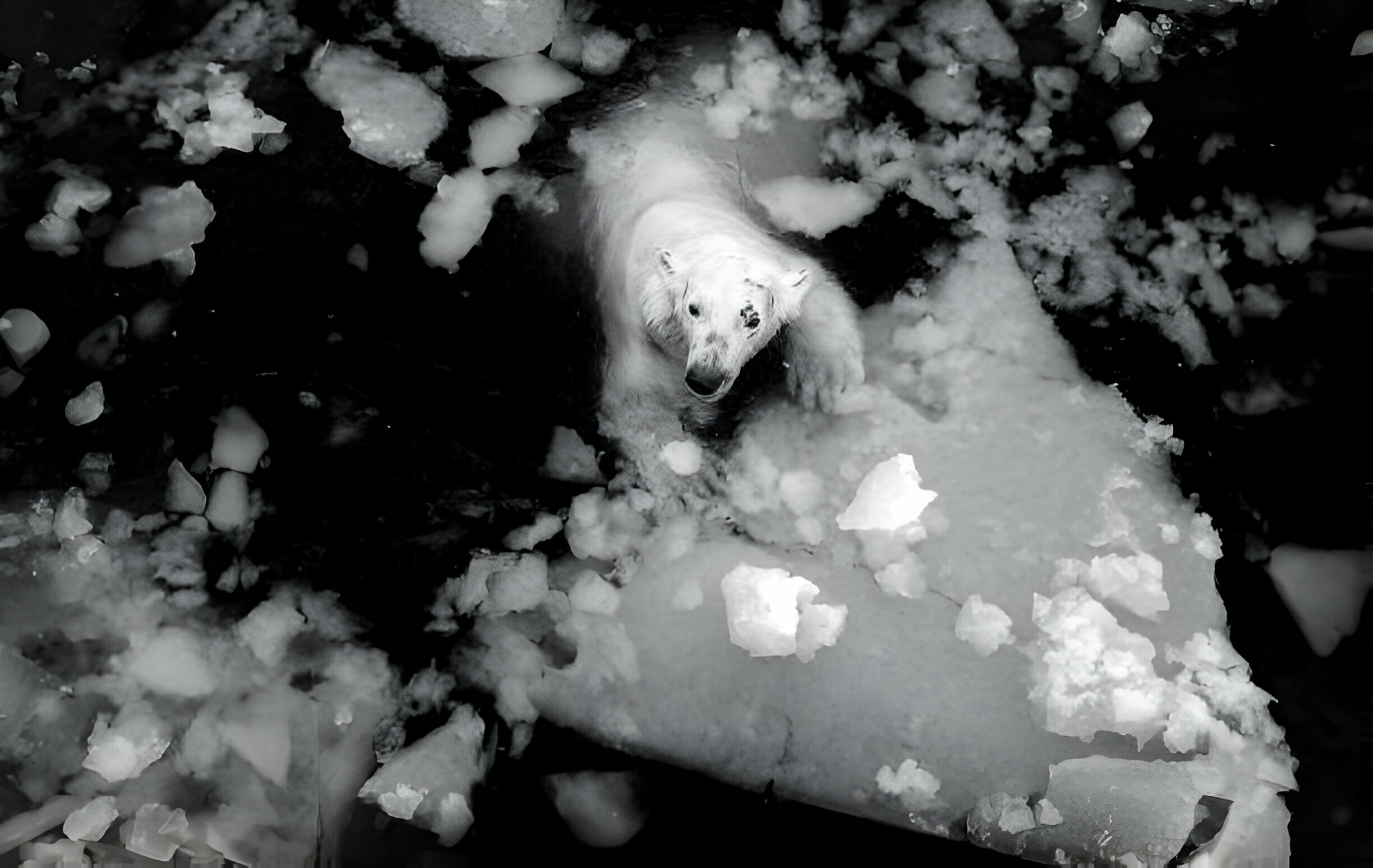Do you ever wonder which creatures feel the heat of climate change the most? From majestic polar bears to vibrant coral reefs, numerous species are facing unprecedented challenges. Penguins waddle through melting ice, while koalas search for disappearing eucalyptus trees. Monarch butterflies struggle to find their way south, and elephants face dwindling water sources. Join us as we explore the impacts on these vulnerable animals in a world growing warmer by the day.
Polar Bears
You should know that polar bears are facing significant challenges due to the effects of climate change. The melting ice in their Arctic habitat is causing a loss of crucial hunting grounds, making it harder for them to find food. This has led to adaptation challenges as bears have to travel longer distances, expending more energy and risking starvation. Some polar bears are even becoming climate refugees, forced to move inland in search of sustenance.
To compound these issues, hunting restrictions are not always effectively enforced, further endangering the already vulnerable population. However, there is hope as conservation efforts by organizations and governments aim to protect these majestic creatures and their icy homes for future generations.
Coral Reefs
Explore how the delicate ecosystems of coral reefs are being impacted by rising ocean temperatures. This increase in temperature leads to coral bleaching events, where corals expel the algae living in their tissues, turning them white and vulnerable to disease. The impact on marine biodiversity is devastating, as many species rely on coral reefs for survival. Ocean acidification effects further weaken these already fragile ecosystems, making it harder for corals to build their calcium carbonate structures. Despite conservation efforts, such as marine protected areas and reducing pollution, the resilience of coral reefs is being severely tested. Witnessing the decline of these vibrant underwater worlds can evoke a sense of urgency and drive for greater action to protect our oceans.
- Coral reefs teeming with life now stand silent and pale.
- Marine creatures losing their homes in a changing environment.
- Once colorful and thriving ecosystems fading into ghostly remnants.
- Urgent calls for global collaboration to save these invaluable habitats before it’s too late!
Penguins
Witness the playful antics of penguins as they navigate the icy waters and rocky landscapes of their Antarctic habitats. Penguins, known for their tuxedo-like appearance, face numerous challenges due to climate change. The table below provides a glimpse into the world of these fascinating creatures.
| Categories | Effects |
|---|---|
| Breeding habits | Disrupted by shifting ice patterns and temperature changes |
| Food scarcity | Increased difficulty in finding food due to altering ocean conditions |
| Habitat loss | Melting ice leading to reduced nesting grounds |
| Population decline | Decreasing numbers due to environmental pressures and changing ecosystems |
| Climate adaptation | Attempting to adjust by altering hunting strategies and breeding locations |
Penguins are resilient but require our help in combating the threats they face in their changing environment.
Koalas
Koalas, known for their adorable appearances and eucalyptus diet, are facing significant challenges in their natural habitats. Here’s what they’re up against:
- Eucalyptus depletion, habitat loss: Koalas rely on eucalyptus trees for food and shelter, but deforestation threatens their homes.
- Heat stress, dehydration: Rising temperatures due to climate change put koalas at risk of heat stress and dehydration.
- Bushfire vulnerability, extinction risk: Increased bushfires destroy crucial habitats and push koalas closer to the brink of extinction.
- Disease prevalence, population decline: Diseases like chlamydia have been spreading among koala populations, contributing to a decline in numbers.
With limited genetic diversity exacerbating these issues, conservation efforts are vital to ensuring the survival of these iconic marsupials.
Monarch Butterflies
The monarch butterflies’ annual migration covers thousands of miles, showcasing their remarkable endurance. These delicate creatures exhibit fascinating migratory patterns that are now under threat due to various factors. Climate sensitive behavior has made them vulnerable to drastic changes in weather patterns, affecting their ability to complete their journey successfully. Milkweed depletion, essential for their reproduction and survival, has further endangered the population by disrupting their life cycle. Habitat loss due to human activities has also posed a significant challenge for these beautiful insects. As a result, the monarch butterfly population is on the decline, urging for immediate conservation efforts to ensure their continued existence.
| Keywords | Description |
|---|---|
| Migratory patterns | Showcases remarkable endurance |
| Milkweed depletion | Disrupts life cycle and reproduction |
| Habitat loss | Due to human activities |
| Climate sensitive behavior | Vulnerable to weather changes |
| Population decline | Urgent need for conservation efforts |
Sea Turtles
Explore the various species of sea turtles along the coastlines and learn about their nesting habits and migration patterns. These incredible creatures face numerous challenges due to human impact on their habitats.
- Witnessing sea turtles struggling to find suitable nesting sites can evoke a sense of urgency to protect these areas.
- The vulnerability of sea turtle hatchlings to temperature sensitivity highlights the delicate balance they depend on for survival.
- Understanding the complex migration patterns of sea turtles can inspire awe at their remarkable navigational abilities and long journeys.
- The detrimental effects of coastal development on sea turtle populations serve as a stark reminder of the importance of conservation efforts in preserving their habitats amid urban expansion.
Elephants
Observing elephants in their natural habitat can be a truly humbling experience, showcasing their intelligence and social dynamics. Elephant conservation efforts are crucial as human elephant conflict, driven by factors like habitat loss, poses a significant threat to these majestic creatures. With climate change impacting elephant migration patterns due to altering landscapes and resources, the need for conservation is more pressing than ever. Sadly, elephant population decline continues to be a concerning issue that demands immediate attention. By supporting initiatives aimed at protecting elephant habitats, mitigating human-elephant conflicts, and addressing the effects of climate change on their migration routes, we can contribute to ensuring a brighter future for these incredible animals.
Arctic Foxes
Leaving the warm image of elephants behind, let’s talk about Arctic Foxes. These resilient creatures face significant challenges due to climate change. Adaptation strategies become crucial as their changing habitats make finding food more difficult. The melting ice alters their hunting grounds, leading to food scarcity for these resourceful hunters. Consequently, they are forced to alter their migration patterns, seeking new areas with prey available. Sadly, these changes impact their survival rates, pushing them to the brink of extinction in some regions. Witnessing these magnificent animals struggle tugs at your heartstrings and underscores the urgent need for conservation efforts.
- Imagine the Arctic Foxes desperately searching for food.
- Picture them adapting to unfamiliar environments.
- Feel their survival hanging in the balance.
- Reflect on the importance of protecting these incredible creatures before it’s too late.
Orangutans
Imagine how orangutans in the rainforest are facing challenges due to deforestation and habitat loss. The impact of deforestation, driven by the palm oil crisis, poses a significant threat to their natural habitat. As trees are cleared for agriculture and human settlements, orangutans lose vital areas for feeding and nesting. This habitat loss not only endangers orangutan populations but also affects overall biodiversity conservation in these regions. Conservation efforts play a crucial role in protecting these intelligent primates from extinction. Organizations work tirelessly to establish protected areas, rescue and rehabilitate orphaned orangutans, and promote sustainable practices that balance economic needs with environmental preservation. Your support can contribute to ensuring a future where orangutans thrive in their lush rainforest homes.
Snow Leopards
Snow leopards are elusive and well-adapted to their mountainous habitats, with thick fur coats that protect them from the cold.
- Habitat loss: Their homes are shrinking due to human activities like mining and deforestation.
- Human wildlife conflict: Encroachment on snow leopard territories leads to conflicts with local communities trying to protect their livestock.
- Poaching threats: These majestic cats face illegal hunting for their fur and body parts.
- Conservation efforts: Organizations work tirelessly to establish protected areas and educate communities about the importance of preserving snow leopards.
Despite their resilience, snow leopards are at risk due to habitat loss, human-wildlife conflict, poaching threats, and the impact of climate change on their fragile ecosystems.


